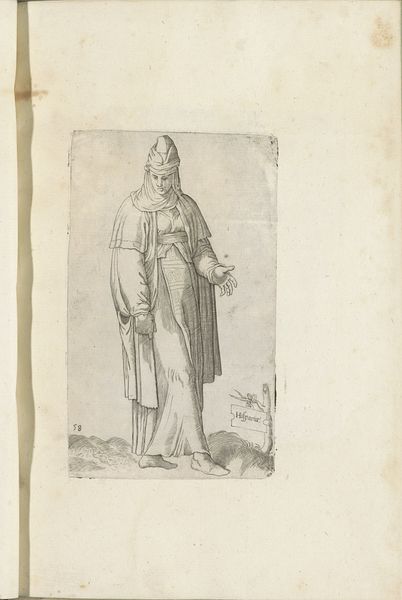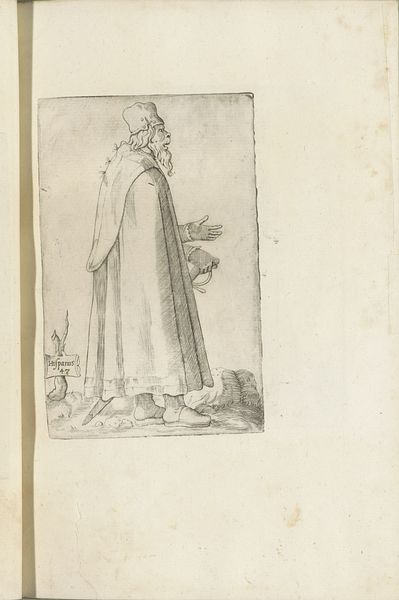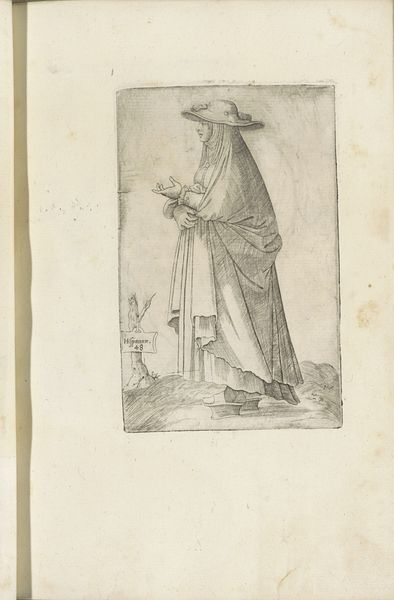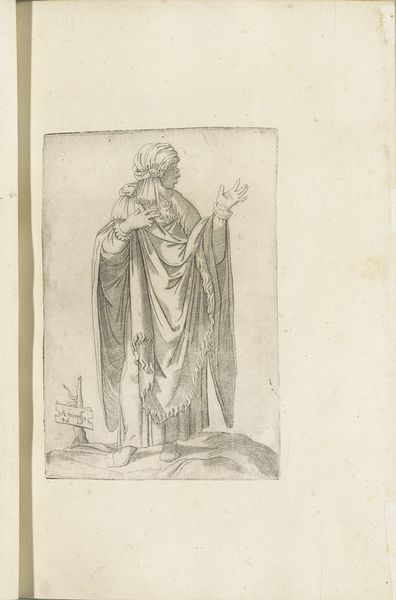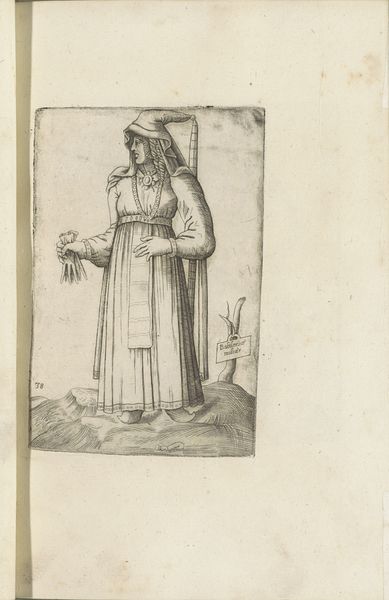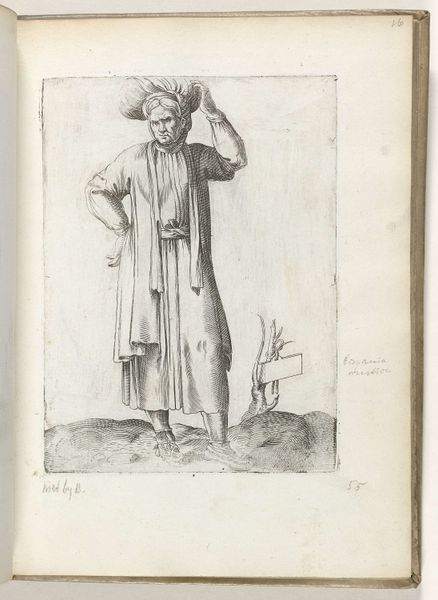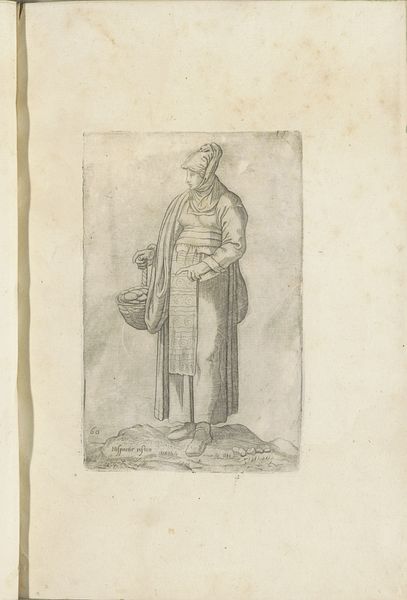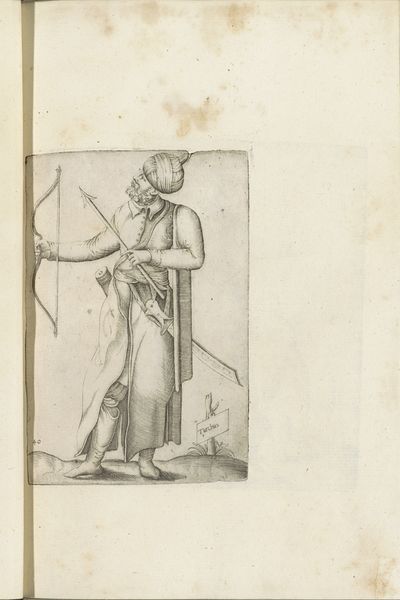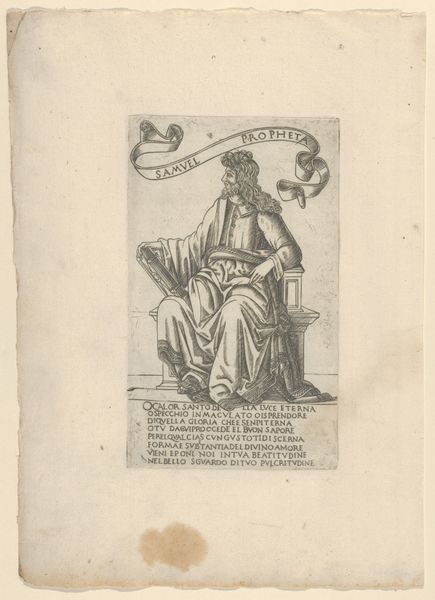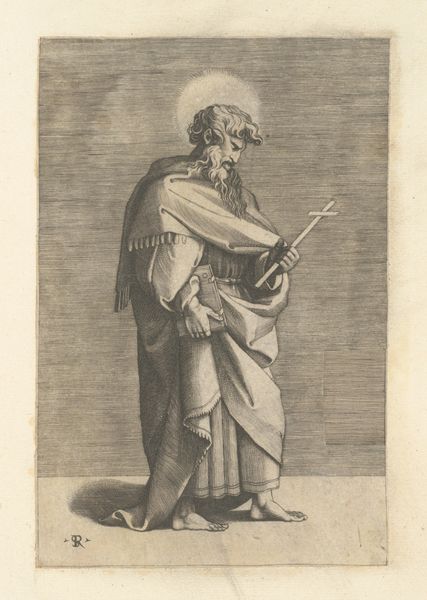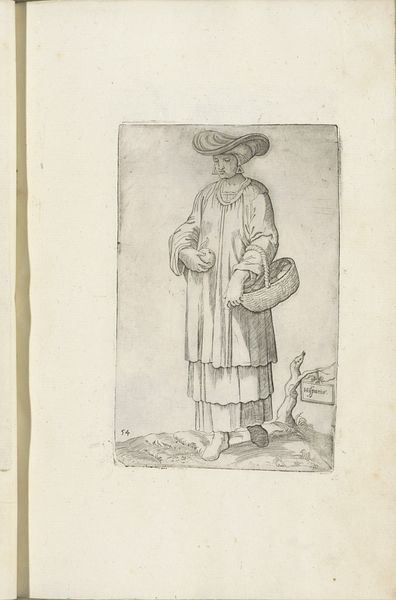
drawing, print, paper, ink, engraving
#
portrait
#
drawing
#
narrative-art
# print
#
mannerism
#
figuration
#
paper
#
ink
#
engraving
Dimensions: height 265 mm, width 195 mm, height 150 mm, width 105 mm
Copyright: Rijks Museum: Open Domain
Editor: Here we have "Vrouw van het Spaanse platteland," or "Woman of the Spanish Countryside," a 1569 engraving in ink on paper by Ferando Bertelli. She seems contemplative, doesn't she? The lines are so fine and detailed. What stands out to you about this piece? Curator: The crucial thing here is not necessarily *who* she is, but *how* she's depicted and, importantly, the material process of its creation. As an engraving, it would have been part of a larger, reproductive industry. Think about the labor involved in its production. How many impressions were made? Who would have had access to these images and at what cost? Editor: That's fascinating, I hadn’t considered the mechanics of its distribution. I was more focused on the artistry itself. Curator: But isn’t the very act of engraving a form of artistry intertwined with labor? The burin cutting into the copperplate, the pressure applied to create each line... This wasn't a unique work meant for a single, wealthy patron, but potentially a mass-produced image. That impacts how we understand its meaning. How does the "woman of the countryside" become a commodity? Editor: So, you're suggesting that its value lies less in its aesthetic beauty and more in its function within a social and economic system? Curator: Precisely! Consider the availability of paper, the cost of ink, the dissemination networks. It's all part of the story. What do we know of printmaking techniques and artisans involved in printmaking in the 16th century? Where the images such as this one circulated at all? Editor: I see. So, by examining the materials and means of production, we can learn more about the cultural landscape of the time? Curator: Exactly! The piece is far more than a portrait; it’s a testament to the material conditions and power dynamics that shaped its creation and consumption. Editor: Wow, I’ll never look at an engraving the same way again! Thanks for pointing out things that I missed at first glance. Curator: My pleasure. Remember, art is never created in a vacuum; understanding the context of production deepens our appreciation.
Comments
No comments
Be the first to comment and join the conversation on the ultimate creative platform.
